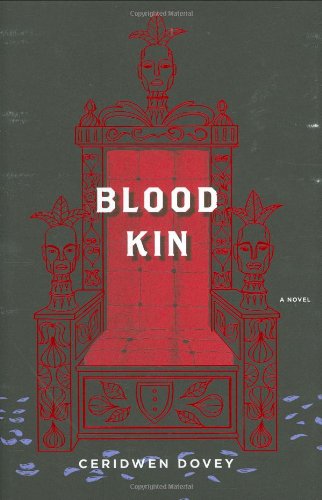 Sitting down to reflect on Blood Kin, Ceridwen Dovey’s debut novel, I realized that there are many ways to approach a book, and a review, and that in this particular case, circumstances have handed me one. Dovey was a classmate of mine in college and when I saw that she’d published a book, I went out to get it with a combination of curiosity and jealousy, excited that a peer had written a novel and interested to see what provocations, over something of a shared span of time, had moved her to write.
Sitting down to reflect on Blood Kin, Ceridwen Dovey’s debut novel, I realized that there are many ways to approach a book, and a review, and that in this particular case, circumstances have handed me one. Dovey was a classmate of mine in college and when I saw that she’d published a book, I went out to get it with a combination of curiosity and jealousy, excited that a peer had written a novel and interested to see what provocations, over something of a shared span of time, had moved her to write.
The book is set in an anonymous country, in the immediate aftermath of a military coup, through which the President and his closest associates have been taken captive in the presidential summer retreat by a man known only as the Commander, a strutting cryptic figure who has usurped their power. In design, Blood Kin recalls Ann Patchett’s Bel Canto, the two sharing a cloistered, claustrophobic setting which frees the characters temporarily from the violence that prompted their situation, and yet which threatens, inevitably, to destroy it. There is also a common attention to the ancillary trades which attend power. Bel Canto spun around the sublime talent of soprano Roxanne Coss. Blood Kin directs its attention to more mundane, but no less potent roles, the President’s barber, his portraitist, and his chef, the three of whom trade off first-person control of the narrative.
It’s a promising set-up, which makes it all the more disappointing that over the course of 180 pages, it does not really go anywhere. The premise, and the small points of action which occur in turn, are used mainly as jumping off points from which the characters recall moments from the past, their own idiosyncrasies, former lovers, and remaindered sensations of childhood. Early in the book the barber escapes for a late night tryst with the Commander’s wife, an episode that might be filled with tension and sensuality, but which deflates under the weight of the barber’s long recollection of how he came into the trade and came to serve the president. A scant portion of the chapter is devoted to the actual present-tense unrolling of events, which makes what action there is feel almost beside the point.
The problem is not that the digressions are poorly written or awkwardly conceived. In fact, they are often quite imaginative and authentic, standing solidly on their own as the peculiar ways in which a life might have been lived. When the portraitist recalls a scene from his youth, of a child building sand animals on the beach using an empty dishwashing detergent bottle, it rings true as one of those unexplainable things which stick in memory after so much else has been forgotten. And Dovey’s digressions about each tradesman at work are knowing and confident. She describes the thick patina of paint which has accrued on the portraitist’s palette, the glancing touch by which the barber infuses physical pleasure into his haircuts, and the experienced way the chef stalks prone abalones, sneaking up on them with a rolling pin so as to kill them by surprise, before they can stiffen in fright.
One challenge of the first novel, I imagine, is getting free from all the thoughts, images, and experiences you as a writer have collected prior to beginning to write. Blood Kin never begins to feel autobiographical, but it does at times feel like a repository of the many little set-pieces and conceits that must have occurred to Dovey throughout her life, prior to the specific conception of this story. While the component parts are good, they don’t build together, so that by the end of the book, our understanding of the characters compares with the advancement of the plot; they both lie more or less in the same place we began.



